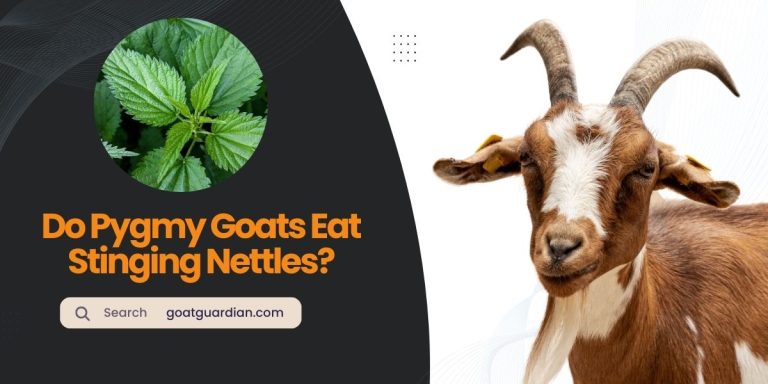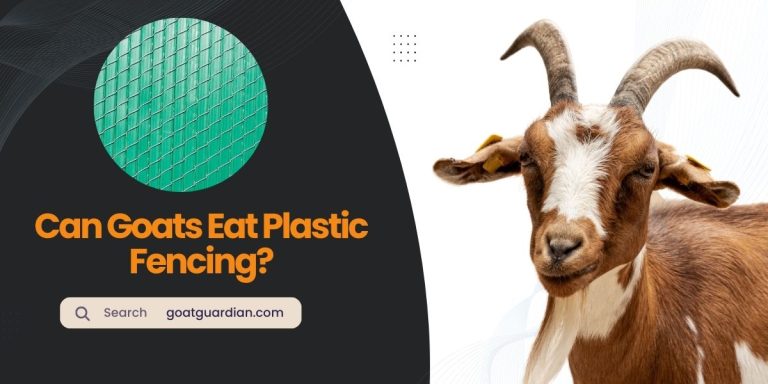How Much Banamine to Give a Goat? (Dosage Guide)
To determine the appropriate dosage of Banamine for a goat, consult a veterinarian for accurate guidance. Various factors, such as the weight, age, and condition of the goat, need to be considered when administering Banamine.
It is essential to follow the veterinarian’s instructions precisely to ensure the goat’s well-being. Banamine should be administered under the skin, not in the muscle, for goats, sheep, alpacas, and llamas. Remember that flunixin injectable liquid can be given orally to horses but not to these animals.
Additionally, Banamine paste formulation may not be suitable for goats. Always consult with a professional to ensure the correct dosage and method of administration for Banamine in goats.
Understanding Banamine Use In Goats
Banamine, also known as flunixin meglumine, is a non-steroidal anti-inflammatory drug (NSAID) commonly used to relieve pain and reduce inflammation in goats. It is effective in treating various conditions like colic, respiratory issues, mastitis, and arthritis.
Banamine is available in different formulations, including injections, paste, and liquid. Each formulation has its own appropriate use and dosage. The injection and paste formulations are commonly used for goats, while the liquid formulation is suitable for horses.
It’s important to note that the injection is administered under the skin, while the paste can be given orally. Before administering Banamine to goats, it’s essential to consult with a veterinarian for proper dosage instructions.
Giving the wrong dosage or using the wrong formulation can have detrimental effects on the goat’s health. Always follow the veterinarian’s guidance to ensure the well-being of your goats.
Differences between Banamine injection, paste, and liquid formulations:
| Formulation | Usage | Administration |
|---|---|---|
| Injection | Used for goats | Administered under the skin |
| Paste | Used for goats | Given orally |
| Liquid | Used for horses |
It is crucial to understand the appropriate use and dosage of Banamine for goats to ensure their well-being and avoid any potential adverse effects. Consulting with a veterinarian is essential to obtain accurate dosage instructions and guidance for administering Banamine to goats.
Determining The Correct Banamine Dosage For Goats
| Factors to consider when calculating Banamine dosage for goats: Weight-based dosing: Calculating the correct amount of Banamine per pound of body weight is crucial. The recommended dosage is 1-2 milligrams of Banamine per kilogram of body weight. Administering Banamine: There are different routes of administration for Banamine, including oral, subcutaneous (under the skin), and intramuscular (in the muscle). For goats, flunixin injection is only given under the skin and is not suitable for intramuscular administration. Can Banamine be given orally? While Banamine injectable liquid can be given orally to horses, it should only be administered under the skin to goats, sheep, alpacas, and llamas.Other considerations: For pain relief in goats, Banamine is a commonly used nonsteroidal anti-inflammatory drug (NSAID) with analgesic effects. When using Banamine, it is important to follow the recommended dosages and consult a veterinarian when unsure. It is always advisable to have a list of essential goat medications and their uses for reference. |
Safety Precautions And Potential Side Effects
Administering Banamine to goats requires taking certain safety precautions to avoid potential side effects. Common side effects of Banamine in goats include mild diarrhea, decreased appetite, and mild depression.
It is important to carefully follow the correct dosage instructions and use the appropriate form of Banamine, whether it’s injectable or oral.
When administering Banamine to goats, it is recommended to seek veterinary assistance or advice in specific situations. If the goat’s condition worsens despite treatment or if adverse reactions occur, consulting a veterinarian is crucial.
High fever, severe dehydration, or other signs of distress may warrant immediate veterinary attention.
It’s essential to be familiar with the correct dosage of Banamine for goats and to use it judiciously. Dosages for pain relief in goats may vary depending on factors like the goat’s weight, age, and overall health.
Consulting a veterinarian or referring to reliable sources is highly recommended to ensure accurate dosing and minimize the risk of side effects.
Other Pain Relief Options For Goats
When it comes to managing pain in goats, there are alternative options to consider apart from Banamine. Local anaesthetics are ideal for reducing acute pain but may not be effective for chronic pain.
NSAIDs, such as Flunixin Meglumine, are a group of drugs that have anti-inflammatory, antipyretic, and analgesic effects. These medications provide relief from inflammation and pain in goats.
It is important to note that Flunixin Meglumine injection can be given orally to horses, but for goats, sheep, alpacas, and llamas, it should only be injected under the skin, not in the muscle.
When administering pain relief medication to goats, it is essential to follow proper dosage guidelines. If you are unsure about the appropriate dosage, it is recommended to consult with a veterinarian.
In conclusion, while Banamine is commonly used for pain management in goats, there are other options available, such as NSAIDs, that can effectively alleviate inflammation and pain in goats.
Understanding Anti-inflammatory Medications For Goats
Anti-inflammatory medications play a crucial role in managing inflammation in goats. Flunixin Meglumine, commonly known as Banamine, is one such medication widely used in goats. It effectively reduces inflammation, alleviates pain, and helps control fever.
Dosage for Banamine varies depending on the condition being treated and the weight of the goat. It is important to consult a veterinarian for proper dosage instructions.
In addition to Banamine, there are other anti-inflammatory options available for goats. Non-Steroidal Anti-Inflammatory Drugs (NSAIDs) are a class of medications that offer anti-inflammatory, analgesic, and antipyretic effects.
These drugs can help manage pain and reduce inflammation in goats. However, it is crucial to use them under veterinary guidance to ensure the correct dosage and minimize any potential side effects.
It is important to note that different anti-inflammatory medications may have specific administration instructions based on the animal species. Therefore, it is essential to consult a veterinarian before administering any medication to goats to ensure their safety and well-being.
Dosages And Usage Of Other Antibiotics For Goats
| Recommended dosages for antibiotics commonly used in goats | Effective antibiotics for specific goat health issues | Administering antibiotics to goats: Injection vs. oral dosage |
|---|---|---|
| Banamine: Flunixin meglumine injection can be given under the skin to goats, sheep, alpacas, and llamas. The paste formulation can be given orally to horses. It is not recommended for use in the muscle for goats. | Local anaesthetics are ideal for reducing acute pain, while non-steroidal anti-inflammatory drugs (NSAIDs) have anti-inflammatory, antipyretic, and analgesic effects. For specific health issues, consult a veterinarian for appropriate antibiotics. | Administering antibiotics through injection or oral dosage depends on various factors such as the severity of the condition, animal size, and ease of administration. Consult a veterinarian for the most suitable method. |
| Oxytetracycline: The dosage for goats is typically 5-10 mg per kilogram of body weight, and it is commonly used to treat respiratory and gastrointestinal infections. | Each antibiotic has specific effectiveness against different health issues in goats. Consult a veterinarian for proper diagnosis and suitable antibiotics. | While some antibiotics are available in injectable form, others can be given orally. The choice depends on the antibiotic and the condition to be treated. A veterinarian can guide you in selecting the appropriate method. |
| Penicillin: The dosage for penicillin injections in goats is typically 3-5 milliliters per 100 pounds of body weight. It is effective in treating various bacterial infections. | Flunixin meglumine (Banamine) is commonly used as an anti-inflammatory drug for goats. Refer to a veterinarian for specific guidance. | Both oral and injectable forms of antibiotics have their advantages and disadvantages. Consider factors such as ease of administration and absorption rate when deciding on the method. |
| Amoxicillin: The oral dosage for goats is typically 5-10 milligrams per kilogram of body weight. It is commonly used to treat respiratory and urinary tract infections. | Before administering any antibiotic to goats, consult a veterinarian to properly diagnose the health issue and determine the most effective treatment. |
Frequently Asked Questions Of How Much Banamine To Give A Goat
Can Banamine Be Given To Goats?
Yes, banamine can be given to goats. Flunixin injectable liquid can be administered orally to horses and is also suitable for goats, sheep, alpacas, and llamas, but it should be given under the skin, not in the muscle.
How Much Banamine Paste For A Goat?
The appropriate dosage of banamine paste for a goat should be determined by a veterinarian. Do not administer banamine orally to goats. Flunixin injectable liquid may be given under the skin, but not in the muscle. Always consult a vet for accurate dosing and medications for goats.
What Can You Give A Goat For Pain?
To relieve pain in goats, local anaesthetics are ideal for acute pain, while NSAIDs have anti-inflammatory and analgesic effects. Consult a veterinarian for proper dosages and medication recommendations.
What Is The Anti-inflammatory For Goats?
The ideal anti-inflammatory for goats is Flunixin Meglumine, a drug that has anti-inflammatory, antipyretic, and analgesic effects. This medication can be given to goats under the skin, but not in the muscle. Other options, such as local anaesthetics or NSAIDs, may also be used for pain relief in goats.
It is important to consult a veterinarian for proper dosage and administration of medications for goats.
Conclusion
In the world of goat care, understanding the proper dosage of Banamine is crucial. As we have discussed Banamine can be given to goats but must be administered via the subcutaneous route. It’s important to note that oral administration of Banamine is not safe for goats.
By following the correct dosage guidelines and consulting with a veterinarian, goat owners can effectively manage pain and inflammation in their animals. When it comes to the well-being of our goats, proper medication administration is key.






